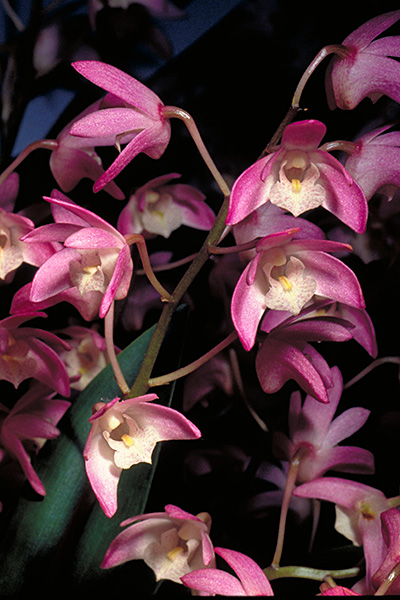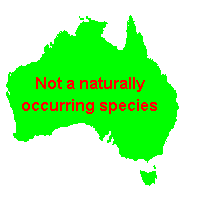General Description:
Dendrobium is a large genus with around 1400 species spread throughout Asia and the Pacific. Australia has about 56 species, many of which are cultivated. Considerable hybridization has been carried out within the genus to produce improved horticultural forms and a number of naturally occurring hybrids are also in cultivation.
Major taxonomic revision of the Dendrobium group has occurred in recent years with many species being transferred to new genera. Some of these changes have been reasonably widely accepted (eg Dockrillia) while the status of others is less certain. Dendrobium ‘Bardo Rose’ is retained as the name for this cultivar here in accordance with the Australian Plant Census.
Dendrobium “Bardo Rose” is a deliberate cross between D.falcorostrum and D.kingianum and it was one of the earliest registered hybrids between Australian Dendrobium species. Pseudobulbs up to 200 mm long arise from a branched rhizome and flowers develop on stems from the leaf axils. The flowers are up to 30mm across and may be pale pink to mauve in colour. The flowers are also usually perfumed.
D.”Bardo Rose” is popular in cultivation and is easy to grow, particularly in temperate climates. It can be grown on branches of trees or on rocks where it receives nutrients through the break down of leaf litter that accumulates around its root system. While the plant is establishing its root system, it may need to be fixed into position by wire or twine. Eventually new roots will form which will grip the substrate firmly. The plant should not be planted directly into soil as the root system is not adapted to constant moisture. It is also commonly grown as a container plant in a coarse medium such as pinebark chips. Glasshouse cultivation is not necessary except in very cold districts. It should not be grown in dense shade or flowering will be discouraged. Application of liquid fertilizer during the growing season (spring – summer) will promote healthy growth. Watering should be kept to a minimum during winter.
Plants can usually be obtained through specialist Australian orchid nurseries. The plant can also be propagated by division of the clump.

Dendrobium ‘Bardo Rose’
Photo: Brian Walters
 Australian Native Plants Society (Australia)
Australian Native Plants Society (Australia)













